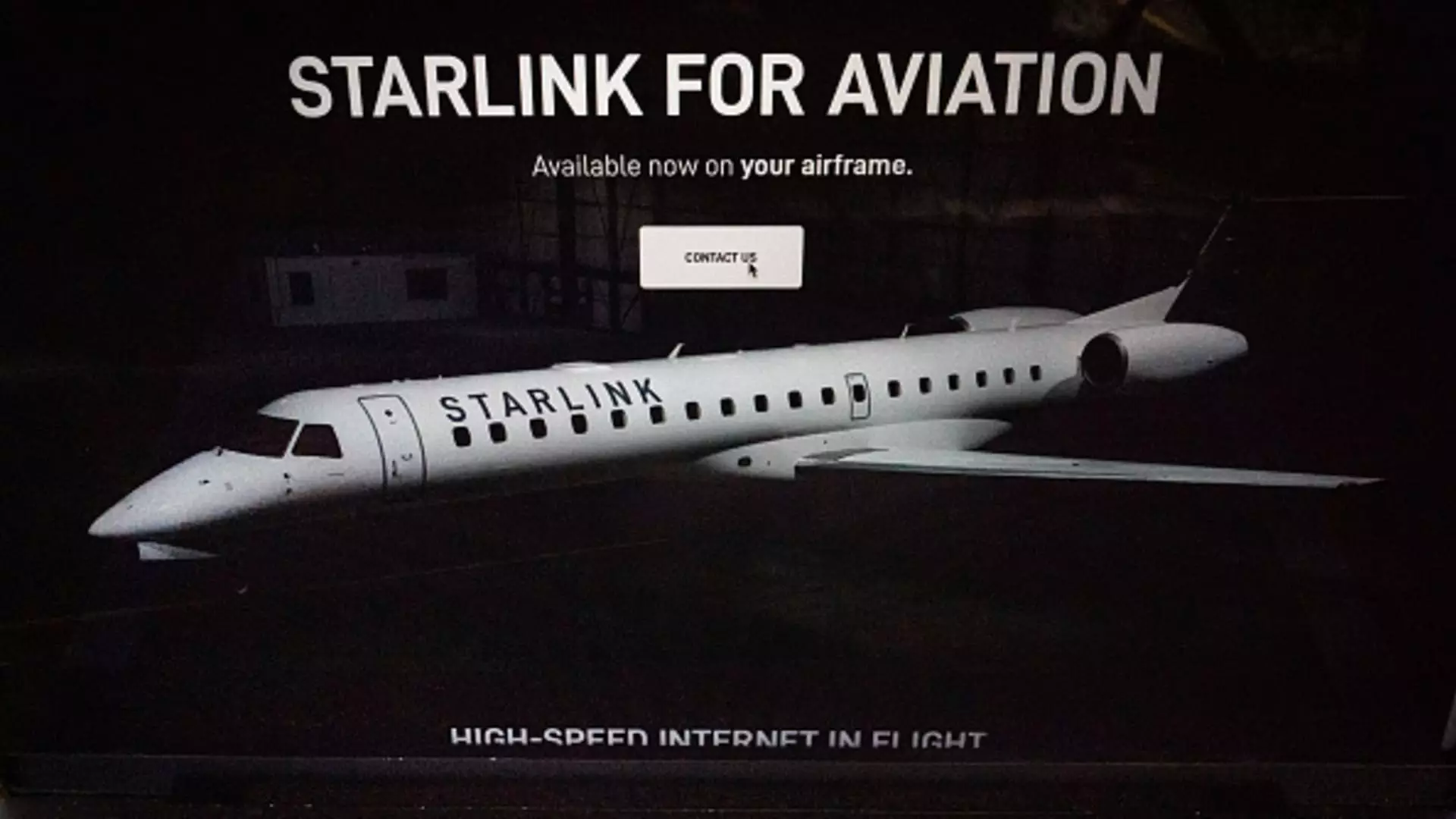In a groundbreaking move for both SpaceX and the aviation industry, the aerospace company is significantly increasing its presence in the in-flight connectivity (IFC) market with its Starlink satellite services. Recent announcements, particularly the monumental deal with United Airlines, signify a transformative shift not just for the company but for passengers and airlines around the globe. United’s commitment to equip over 1,000 aircraft with Starlink Wi-Fi has propelled SpaceX’s backlog of in-flight orders to about 2,500 aircraft, emphasizing the rapid growth of a service that was only conceptual just a few years ago.
Nick Galano, the Director of Starlink Aviation Sales and Partnerships, articulated the enthusiasm surrounding this development during a recent panel discussion at the World Space Business Week conference in Paris. The excitement goes beyond mere statistics; it represents a paradigm shift in how airlines will approach customer satisfaction and operational efficiency in the near future.
United’s decision to install Starlink services stands as its largest IFC agreement to date, effectively phasing out existing partnerships with other Wi-Fi providers such as Viasat and Gogo. The airline’s decision not to charge passengers for Wi-Fi access is a noteworthy strategy, aiming to enhance the travel experience and attract a higher number of tech-savvy customers who expect seamless internet connectivity. This represents a competitive differentiator in a saturated market where customers have frequently criticized existing in-flight services for slow and unreliable internet.
As Galano pointed out, United’s significant move to Starlink is a reflection of what he terms “the sheer factor of capacity” that Starlink can deliver. This innovative service, which boasts over 300 terabits per second of capacity, potentially transforms the in-flight experience from a frustrating necessity into a desirable aspect of air travel, thereby resonating with a broad audience.
One of the compelling aspects of SpaceX’s offering is its potential for simplicity in aircraft retrofitting. The challenges airlines face when upgrading satellite communications are substantial, often requiring planes to be out of service for extended periods. SpaceX’s innovations seek to streamline this process, with Galano indicating that installations could potentially be completed in less than a day, as demonstrated through partnerships with Hawaiian Airlines and JSX.
In contrast, Delta Airlines, reliant on Viasat for their satellite services, shared that its retrofitting process can average around three days. Although Delta’s current network is broader, involving 1,200 aircraft, the time required for updates to their service could pose challenges in a fast-evolving market where speed and efficiency are paramount.
The rapid expansion and capabilities of Starlink signal a future where in-flight services can be transformed into a competitive advantage for airlines. The plan to offer free Wi-Fi, as executed by Delta, demonstrates that profitable loyalty initiatives can stem directly from improved service offerings. Glenn Latta, Delta’s Managing Director of In-Flight Entertainment, cited a remarkable gain of 3 million additional SkyMiles members after implementing free internet access as part of their frequent flyer program.
Thus, the competition between major airlines becomes a battle of customer delight, and those embracing technological advancements like Starlink could find themselves ahead of the curve. The focus on improving passenger experiences through accessible and high-speed internet access could become a hallmark of airline branding strategies moving forward.
SpaceX’s ambitious surge into the aviation sector is not merely a testament to the company’s vision but represents a significant transformation in how connectivity is perceived and provided in air travel. With the growth of Starlink’s satellite constellation and its increasing market share, the in-flight experience for millions is set for a substantial upgrade.
As major airlines reevaluate their strategies to attract and retain customers, the influence of satellite internet facilities like Starlink will be pivotal in shaping future air travel. The race is on, and those airlines that adapt quickly to these technological advancements will not only enhance their service offerings but could redefine the standard expectations of passengers worldwide.

Leave a Reply